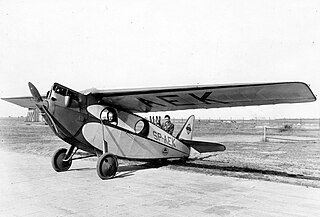
The RWD 4 was a Polish sports plane of 1930, constructed by the RWD team.
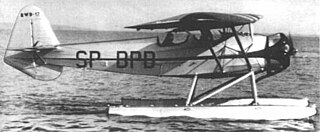
The RWD 17 was a Polish aerobatics-trainer aircraft of 1937, parasol wing monoplane, constructed by the RWD team.

The de Havilland DH.60 Moth is a 1920s British two-seat touring and training aircraft that was developed into a series of aircraft by the de Havilland Aircraft Company.

The Miles M.38 Messenger is a British four-seat liaison and private owner aircraft built by Miles Aircraft.

The General Aircraft GAL.42 Cygnet II was a 1930s British single-engined training or touring aircraft built by General Aircraft Limited at London Air Park, Hanworth.

The Auster J/5 Autocar was a late 1940s British single-engined four-seat high-wing touring monoplane built by Auster Aircraft Limited at Rearsby, Leicestershire.

The Miles M.28 Mercury was a British aircraft designed to meet the need for a training and communications plane during the Second World War. It was a single-engined monoplane of wooden construction with a twin tail and a tailwheel undercarriage with retractable main units.

The PZL-5 was a Polish two-seat touring and sports aircraft of 1930 constructed and produced by the PZL.

The Avro Club Cadet was a 1930s single-engined British biplane trainer aircraft, designed and built by Avro as a development of the earlier Cadet. It was planned for private and club use and, unlike the Cadet, was fitted with folding wings.

The Reid Rambler, later known under the Curtiss-Reid brand after Reid was purchased by Curtiss, was a biplane trainer/sport aircraft built in Canada in the early 1930s and used in small numbers as a trainer aircraft by the Royal Canadian Air Force.

The Miles M.65 Gemini was a British twin-engined four-seat touring aircraft designed and built by Miles Aircraft at Woodley Aerodrome. It was the last Miles aircraft to be produced in quantity.
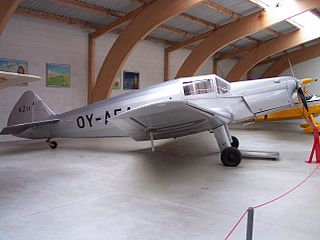
The SAI KZ II was a sport aircraft built in Denmark in 1937, produced in three major versions before and after the Second World War.

The Miles M.18 was a single-engine twin-seat low-winged light British civil utility aircraft of the 1930s.
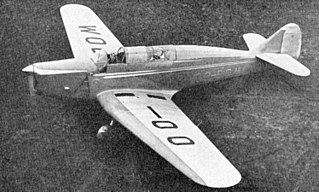
The Fairey Primer was a production version of the Avions Fairey Tipsy M tandem seat single-engined basic trainer. Two production aircraft were completed in the late 1940s.

The Short S.7 Mussel was a single-engined two-seat monoplane built by Short Brothers to test the performance of their duralumin monocoque floats. Two were built.
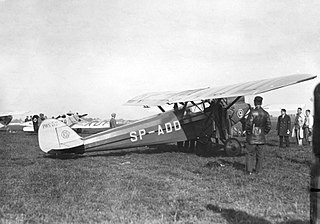
The PWS-52 was a Polish sports aircraft of 1930, a single-engine high-wing monoplane, constructed by the Podlaska Wytwórnia Samolotów (PWS), that remained a prototype.

The CASA III was a 1920s Spanish two-seat monoplane, designed by Luis Sousa Peco and built by Construcciones Aeronáuticas SA (CASA) at Getafe near Madrid.

The Morane-Saulnier MS.341 was a single engine parasol wing training and touring aircraft built in France in the mid-1930s. It had two open cockpits in tandem and was sold to private owners, clubs and the Armée de l'Air.

The Bernard 200 T was the first of a series of French light touring aircraft from the early 1930s. Single engined and seating three or four, they were high cantilever wing monoplanes. Four Bernard 200 T were built and subsequently modified into three further variants.
The Emsco B-4 Cirrus was a mid-wing, two-seat trainer built in the US in the late 1920s. Six were built and three variants with more powerful engines flown.






















